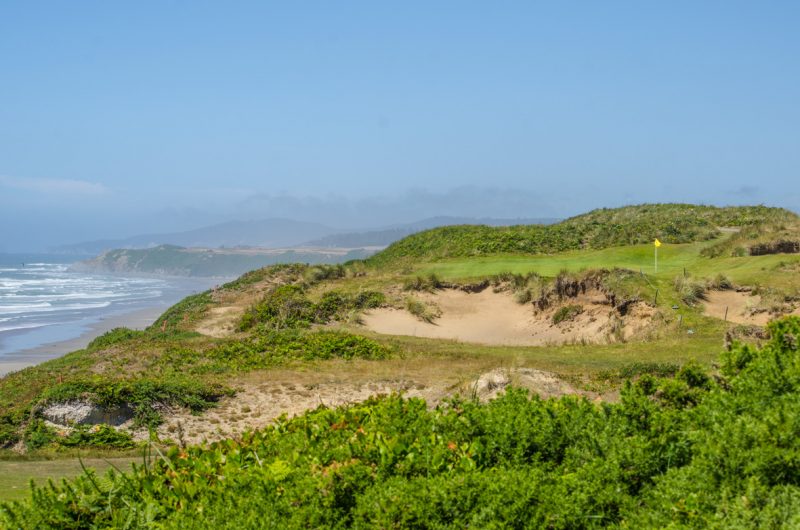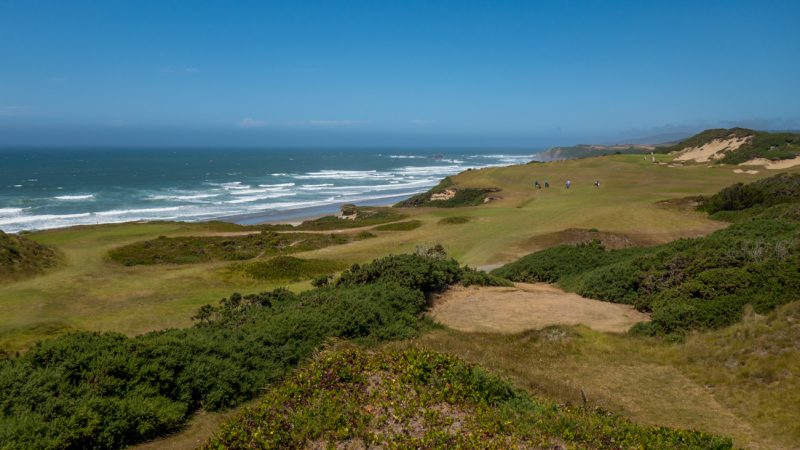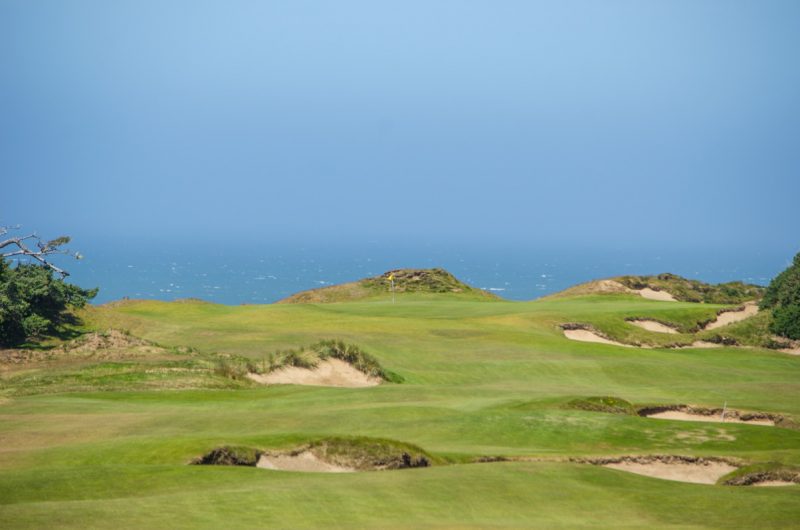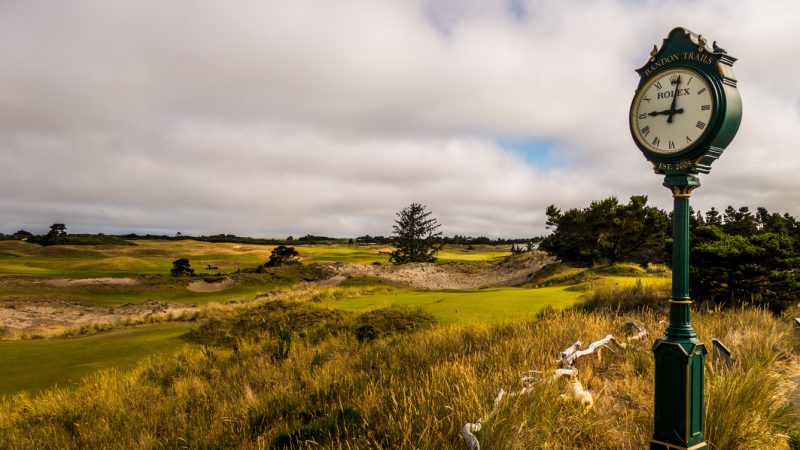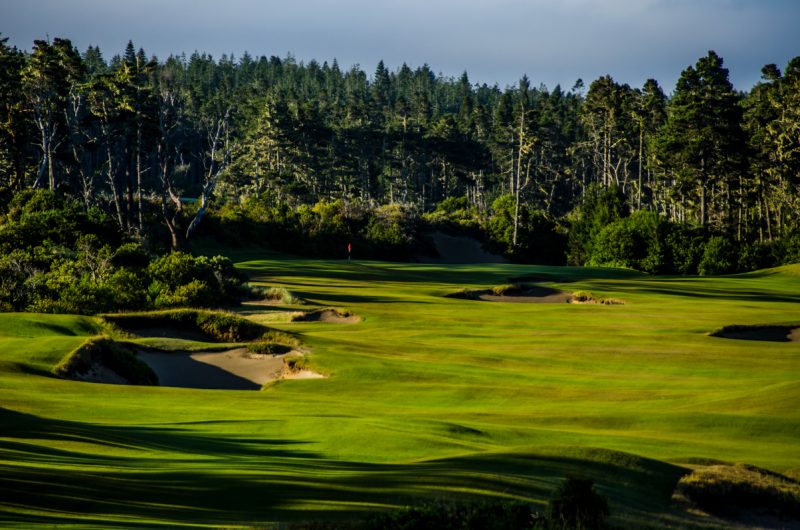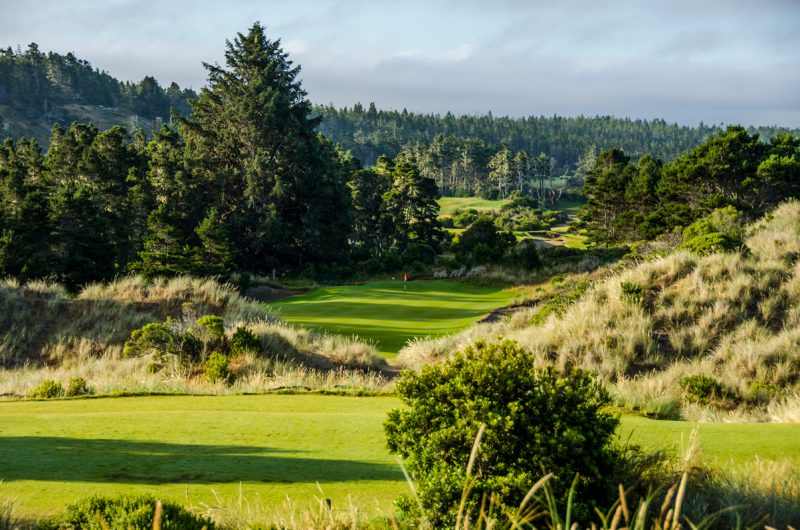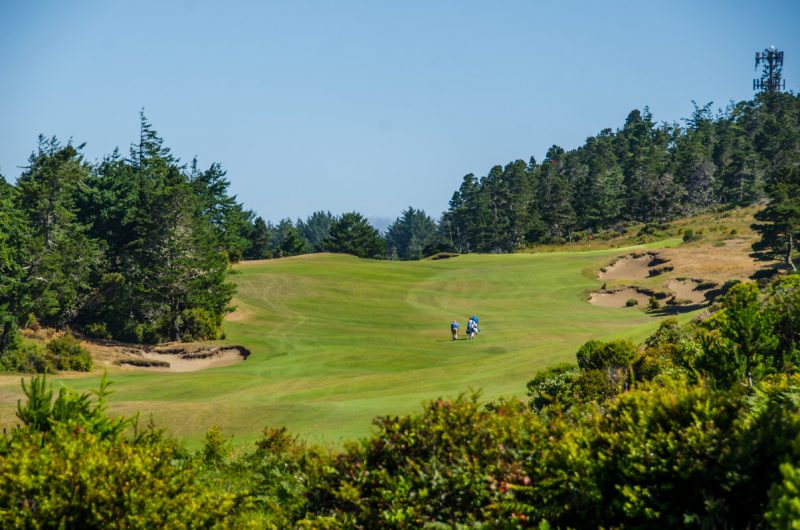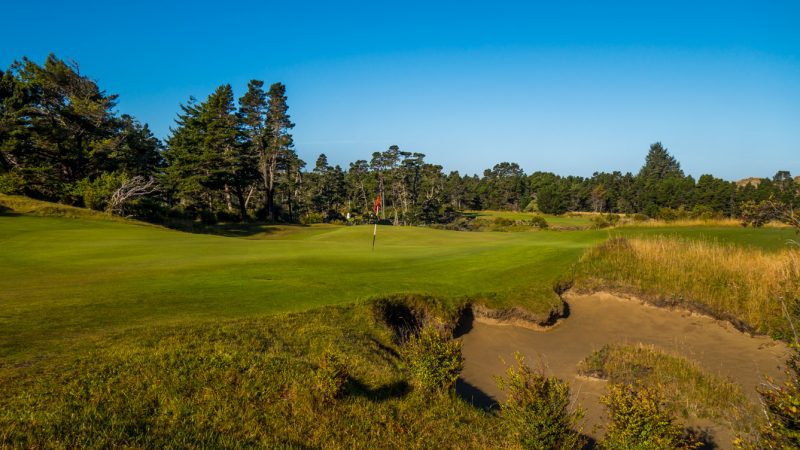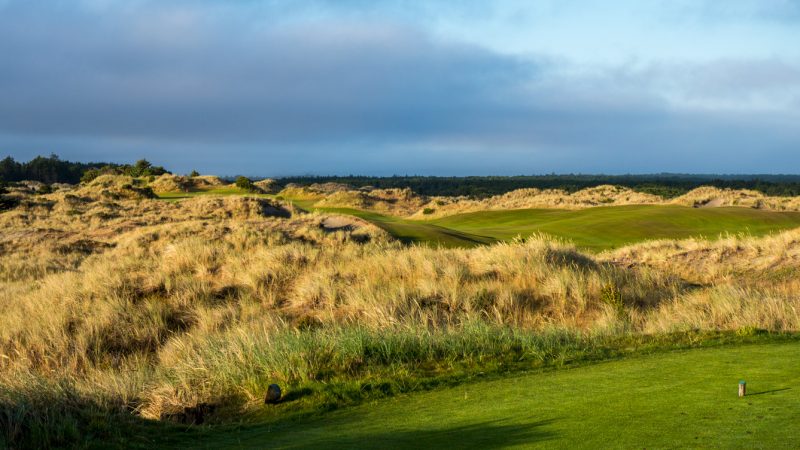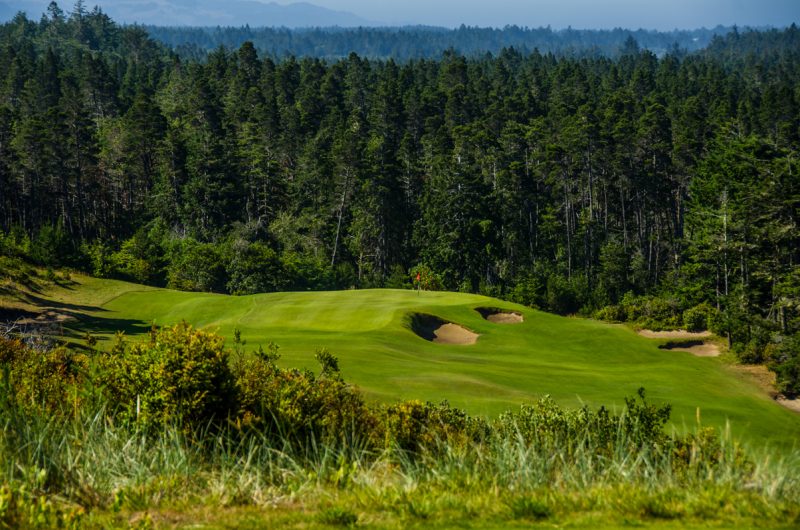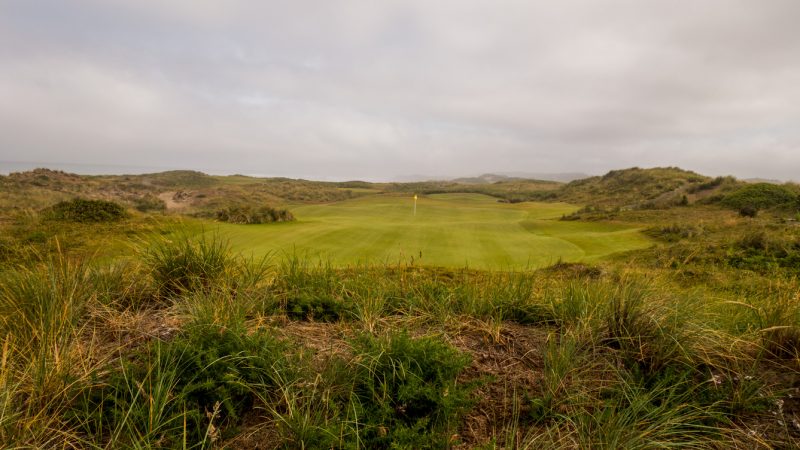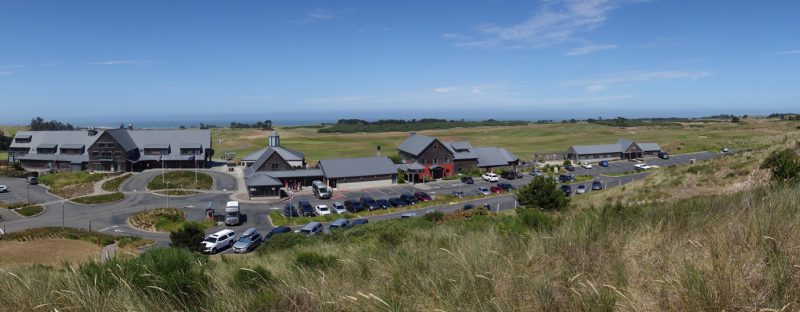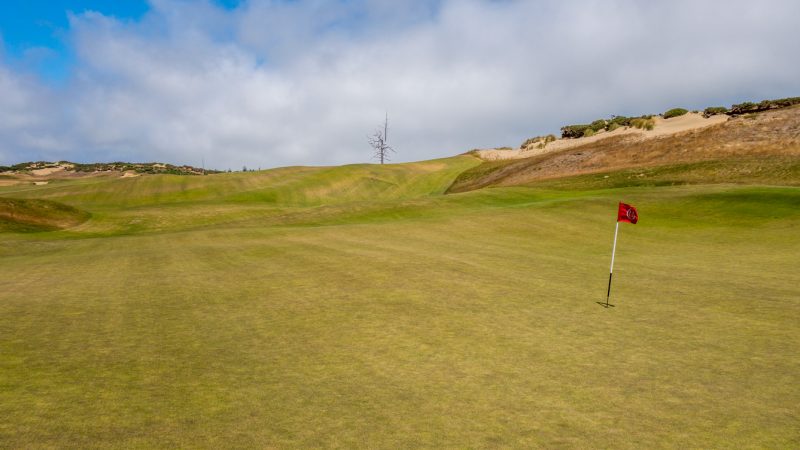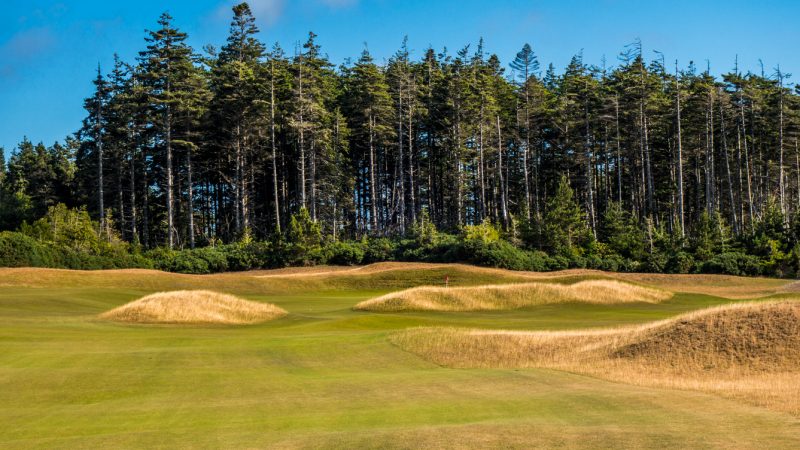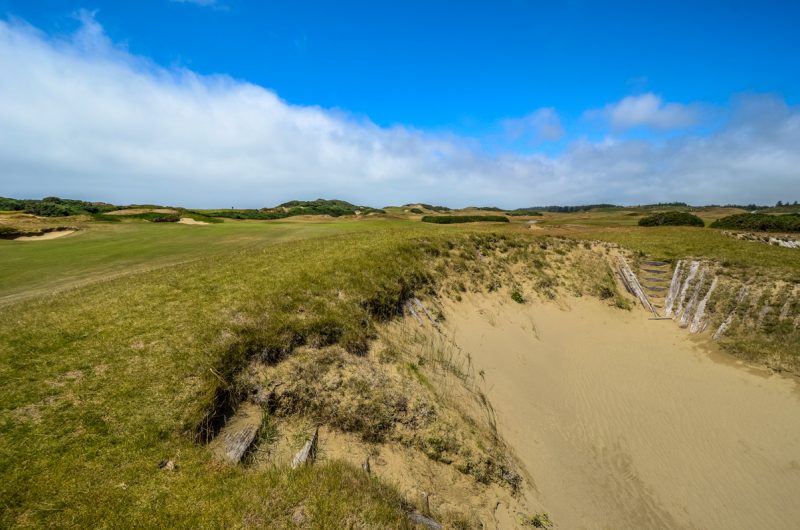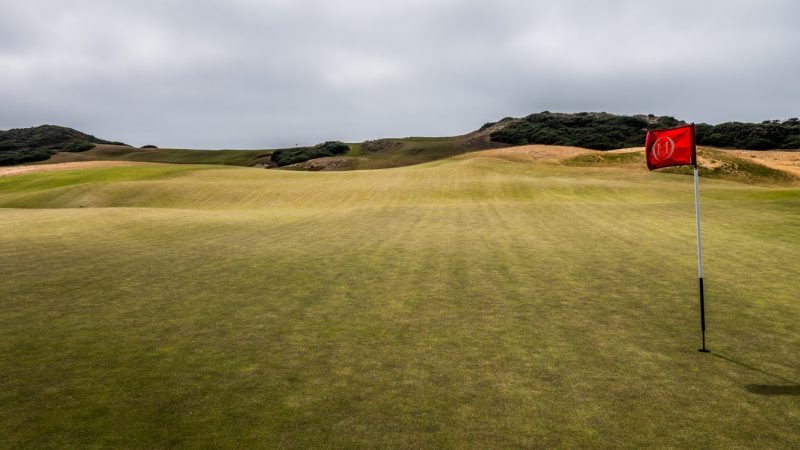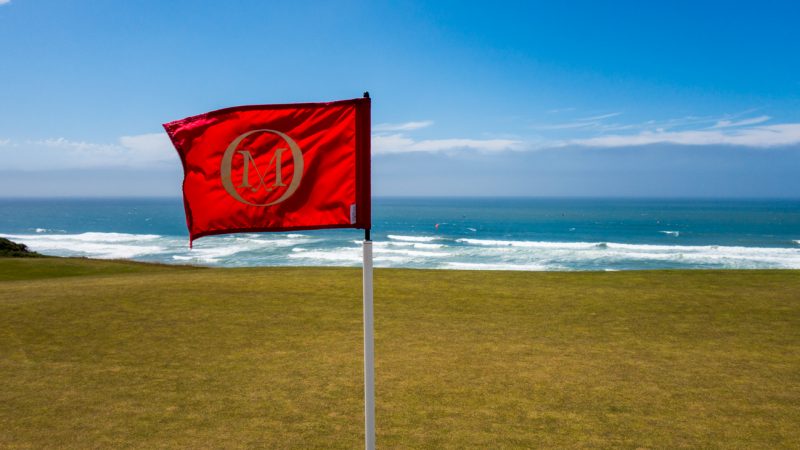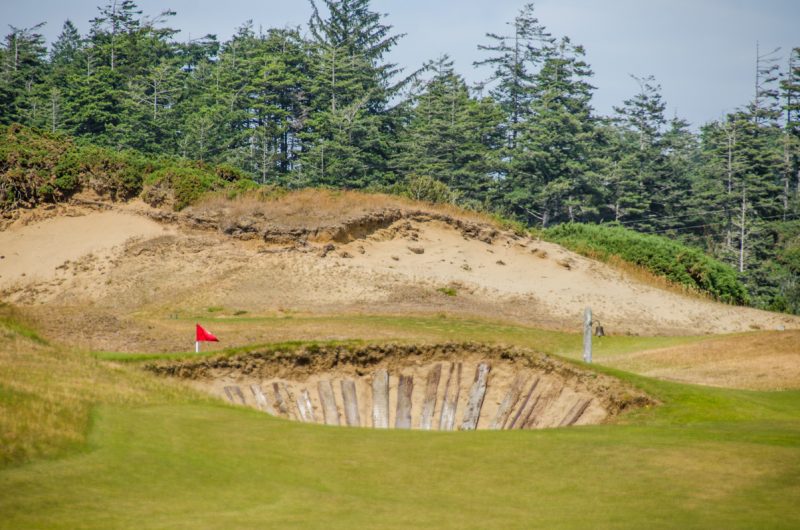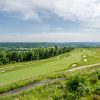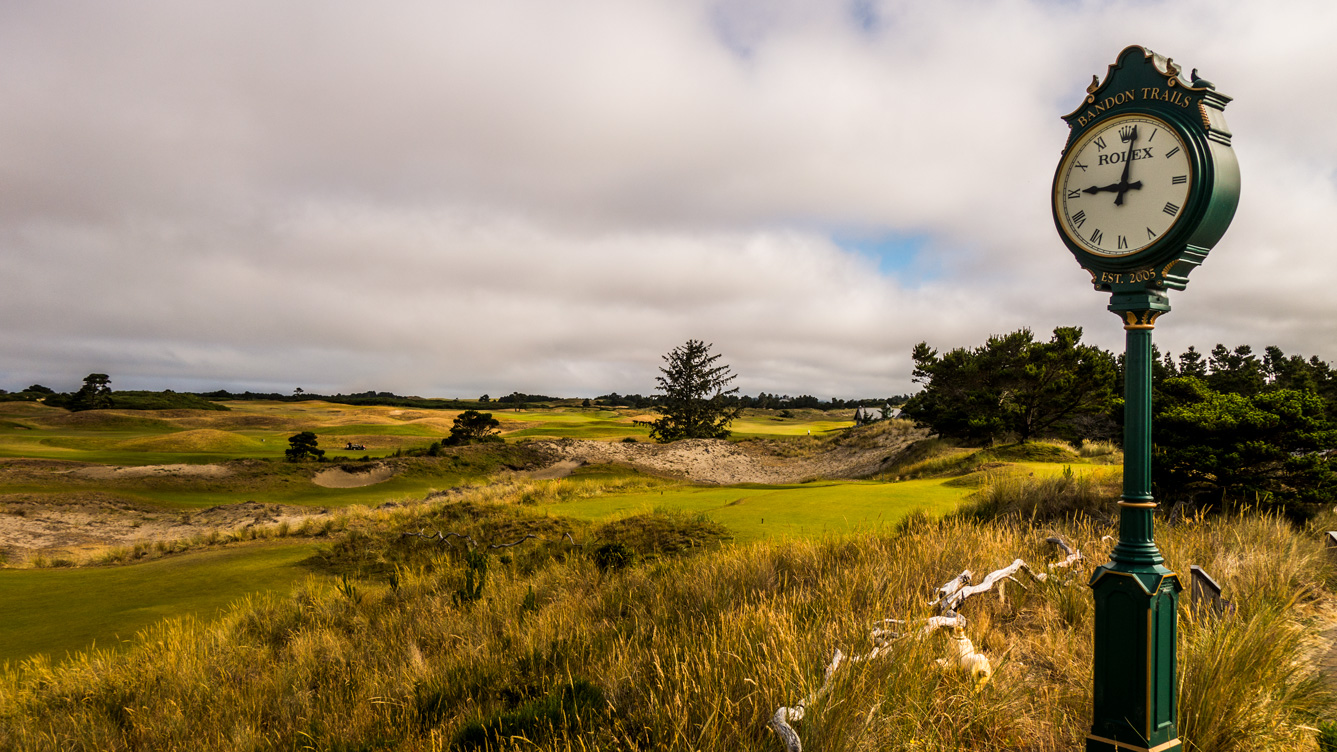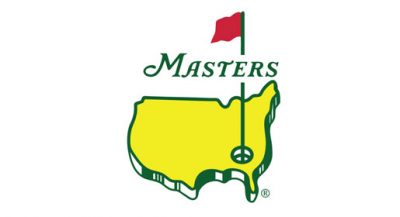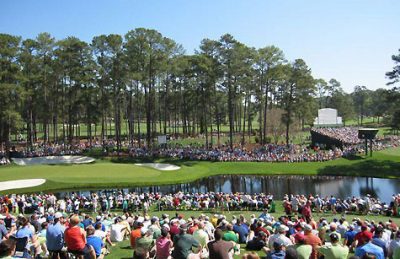2018 Product of the Year – Best Golf Course – Pacific Dunes
Categories: Golf • Golf Course Architecture • Golf Courses • Golf For Women
Tags: Bandon Dunes • Florida • Mexico • Oregon
The HOG Product of the Year for best golf course is a course which was featured/reviewed in the calendar year, and has never been played previously. This year there are some very good courses played on the HOG World Tour, so the winner is certainly the cream of the crop. Here is a list of the finalists for this year, including all of the courses from Bandon Dunes Golf Resort.
Bandon Dunes (Bandon Dunes Resort)
Pacific Dunes (Bandon Dunes Resort)
Old Macdonald (Bandon Dunes Resort)
Bandon Trails (Bandon Dunes Resort)
Bandon Preserve (Bandon Dunes Resort)
Blue Course at Streamsong Resort, Florida
TPC Danzante Bay, Mexico
Red Ledges, Utah
Every course in the finalists list is tremendous. Each has its own personality, great architectural features, and terrific scenery. One course edged out the rest, and boy am I aching to get back there again.
The envelope please….
Pacific Dunes at Bandon Dunes Golf Resort
Hats off to Pacific Dunes, a Tom Doak design located at Bandon Dunes Golf Resort, on the Oregon coast. Pacific Dunes runs right along the coastline, presenting tremendous and stunning ocean views and vistas.
Walking Pacific Dunes is a pure joy, rivaled only by rounds I’ve played in Scotland at Kingsbarns, The Old Course, Cruden Bay, Balcomie Links, Carnoustie, and the other courses at Bandon.
Pacific Dunes plays very links-like. It features tremendous tee shots, fabulous bunkering, and the views are amazing. Perhaps the strongest parts of Pacific are the green complexes and one of the best sets of par-3’s I’ve ever played.
I could reiterate more of my thoughts on Pacific. Instead I recommend simply checking out my Pacific Dunes golf course review here.
Hats off to Bandon Dunes Golf Resort and Tom Doak for claiming the Hooked on Golf Blog 2018 Product of the Year in the golf course category. It’s truly a prestigious and exclusive award.
Review: Bandon Trails Golf Course at Bandon Dunes Golf Resort
Categories: Course Reviews • Golf • Golf Course Architecture • Golf Courses • Golf For Women • HOG World Tour • Reviews • Travel
Tags: Bandon Dunes • Oregon
Bandon Dunes Golf Resort’s Bandon Trails Golf Course at opened in 2005. “Trails” is the creation of Ben Crenshaw and Bill Coore, one of the best teams in modern golf architecture. The course offers a tremendous change in flavor from the other courses at Bandon Dunes, which are seaside. Instead, Bandon Trails takes the golfer on a journey through the inland dunes and unique Oregon woodlands and vegetation.
What a journey it is, in fact.
Bandon Trails Golf Course Overview
Bandon Trails is an 18-hole course which stretches out to a maximum 6,788 yards. The course rating from the tips (Black tees) is 73.6 with a slope of 130. Four additional sets of tees offer golfers of every age, gender, and skill level the opportunity to choose just the right amount of challenge.
Trails offers up a serene, secluded, quiet, private experience with no houses or buildings of any kind on the course and no parallel fairways. There is plenty of elevation change at Trails. My unscientific measurement via my legs and feet tells me there’s more elevation change at Trails than any other Bandon Dunes course, though Old Macdonald could have something to say about that.
Style-wise I’d call Bandon Trails a combination of a links and a modern parkland design, with some Coore/Crenshaw flavoring mixed in.
Tee
Tee shots on Bandon Trails present the golfer with highly visually pleasing looks. Plenty of photo-opps. Play at the right time of morning or evening when the shadows accentuate the course’s shaping to maximize the aesthetic experience. Here’s a great example below, with some great early morning shadows on the par-5 3rd hole.
Tee shots (not shot with a camera) don’t tend to be deceptive or tricky but that’s not to say they don’t require solid execution. Well placed shots will reward the golfer with the best approach angles and chances for pars and birdies.
The par-3 tee shots at Bandon Trails are perhaps the most thrilling group on the course, with the very strong 2nd, 5th and 17th holes offering up thrilling design and visuals.
Fairway
The fairways at Bandon Trails are plenty wide and will catch most non-errant shots no problem. The fairways are all lined with native, non-short grass areas including dunes with light vegetation to hills/mountains with Oregon forest.
Most fairways feature rugged, native-style bunkering and natural waste areas. Finding those areas isn’t an instant score-wrecker. A moderately well played recovery shot will give the golfer a shot at saving par or even making an occasional birdie.
Green
The greens at Bandon Trails are fun and challenging to putt, but not too crazy. 3 or 4-putts for decent putters are few and far between.
The green complexes (the green and its surrounding areas) at Trails are quite enjoyable to play and present many short game opportunities for the golfer to be creative. Short game options around most of the greens allow the golfer to try any kind of shot, from flops to low runners to putts. The latter for me usually.
Notable Holes
As mentioned the par-3’s at Bandon Trails are very strong, highlighted by the 2nd, 5th and 17th.
The first hole (below) in the early morning looks amazing with it’s long grass flowing in the dunes on each side of the fairway.
One other hole definitely worth mentioning is the thrilling par-4 14th, with its massive elevation drop from tee to green.
Behind the tee on the 14th is a plaque marking the spot where Bandon Dunes founder Mike Keiser stood and realized he had finally found the place, the “American Linksland.”
Final Thoughts
Bandon Trails is one of the best walks I’ve ever had in golf, and I’ve walked many of the world’s best. The architecture is tremendous, naturally guiding the golfer on a wonderful journey in nature, golf, and personal discovery.
Get to Bandon Dunes Golf Resort and experience Bandon Trails and the other fantastic courses the resort has to offer. It will be a trip of a lifetime, as was mine.
Related
Review: Pacific Dunes Golf Course at Bandon Dunes Golf Resort
Review: Old Macdonald Golf Course at Bandon Dunes Golf Resort
Review: Bandon Dunes Golf Course
Review: Bandon Preserve – 13-hole Par-3 Course
Review: Pacific Dunes Golf Course at Bandon Dunes Golf Resort
Categories: Course Reviews • Golf Course Architecture • Golf Courses • Golf For Women • HOG World Tour • Reviews • Travel
Tags: #GolfBlogWorldTour • Bandon Dunes • Oregon
I’m continuing with my reviews of all the tremendous courses at Bandon Dunes Golf Resort with Pacific Dunes Golf Course. Pacific Dunes opened in 2001 and was designed by one of golf’s best modern designers, Tom Doak. I’ve grown to be a big fan of Tom Doak’s work and I’ve experienced a good number of his courses, from Ballyneal in Holyoke, Colorado to The Loop at Forest Dunes in Michigan.
Pacific Dunes Overview
Pacific Dunes is par-71 18-hole course which tips out at 6,633 yards from the Black tees. There are four other sets of tees for golfers of varying skill level, age and gender. The shortest Orange tee is a tad over 5,000 yards. Course slope from the Black tees is 142 with a course rating of 73.0.
The golf course is located along miles of beautiful shoreline amongst natural dunes that link the ocean to the inland. Links. Add the challenging course rating to Pacific Northwest winds that would make Scotland proud. Then mix in a tremendous landscape of dunes and you have a serious but aesthetically stunning test of links style golf.
Tee
Shotmaking from the tees at Pacific Dunes requires strategy, execution, grit and sometimes a little luck. Placing tee shots in the proper positions in the fairway will lead to better looks at the green or next target. Many of the bunkers and undulations of the fairway are slightly hidden or masked from the tee. The landing areas may look small from the tee but properly placed shots will have plenty of room.
Strategy in terms of aiming points and club selection is crucial to avoid catching well placed fairway bunkers, natural hazards, dunes, and native areas.
Fairway
The fairways at Pacific Dunes are hard and fast. They offer up fairly wide landing areas, but are guarded by bunkers and well placed natural features. Outside the fairway is not a recommended place to go, especially with the large gorse bush areas. Yes gorse. When looking out at the gorse and the terrain from the fairway I could swear I’m in Scotland.
Approaching the greens from the fairway is challenging. Often the golfer must make an educated guess as to how much a particular shot will release and place the approach to the proper point. This landing spot could be on the front of the green for a middle to back pin, or even 20-30 yards short of the green for shots that will have a lot of release.
Green
In true links fashion and just like the Old Course in St. Andrews, it is difficult to tell where the fairway ends and the green begins. I love this type of golf.
Putting at Pacific Dunes is a thrill. Each green’s undulations present a solid challenge for the golfer in picking the proper line and speed. It’s also easy to get careless and putt it onto a wrong tier, or even off the green and down to a collection area. Even worse, I saw a few putts go off into bunkers.
Don’t get me wrong though. The greens aren’t too penal or severe. A good putter (like I consider myself) can navigate most any position in two putts.
The collection areas around the putting surfaces give the golfer the option to putt, chip or pitch. Putting worked best for me in terms of distance control and shot difficulty but there were some occasions where I had to fly the ball over a bunker. A high level of concentration is needed in those situations, due to the hard greens and the hard ground beneath the ball.
Strategy
Some holes tempt the golfer to go for it, like the short 316 yard par-4 6th. On one of my rounds on Pacific Dunes, going for it worked. I missed the green short right and put a nice lob wedge close to the pin where I made a satisfying birdie.
Another super fun short par-4 is the 338 yard 16th. On one round I had a hard left-to-right helping wind from the tee. I blasted my driver over the corner and rode the wind to about 20 yards from the green. From there I didn’t even use a wedge. I putted from the fairway to the green, as is almost always an option.
Even short game shots around the putting surfaces can require quite a bit of strategy and creativity, not to mention a lot of help from flat out skill! Check out the video below from the par-3 11th.
Above: John Retzer (GolfBlogger.com) plays a nice hybrid down the slope from the back right of the green. Then John Duval (intothegrain.com) hits a tremendous bunker shot from the right bunkers. And don’t forget to notice the ocean view. Fantastic.
Amenities
Pacific Dunes is part of Bandon Dunes Golf Resort. The resort offers hundreds of acres of golf over six world class courses. Supporting those courses is terrific lodging, food and beverage, spa, hiking, and more.
The practice areas at the resort are fantastic. The customer service at the practice areas, specifically my new friend Melanie Bowman, is unmatched.
Final Thoughts
Pacific Dunes is pure golf. It is golf the way it was meant to be: Walking only. No cart paths. Hard and fast. Aesthetically stunning. Physically and mentally challenging. Rewarding. Memorable.
Pacific might just be my favorite course at Bandon Dunes Golf Resort. But picking a favorite there is like picking the best out of five courses that rank at an 11 on a 1-10 scale.
Related
Bandon Dunes Golf Course Review
Review: Old Macdonald Golf Course at Bandon Dunes Golf Resort
Categories: Course Reviews • Golf • Golf Course Architecture • Golf Courses • Golf For Women • HOG World Tour • Reviews • Travel
Tags: #GolfBlogWorldTour • Bandon Dunes • Oregon
The fourth and newest (18 hole) course at Bandon Dunes Golf Resort is Old Macdonald. “Old Mac” was designed by Tom Doak and Jim Urbina and opened in 2010. Doak and Urbina were inspired on Old Mac’s design by golf course architect Charles Blair Macdonald (1855-1939). Macdonald is considered the father of American golf, having built the first full size 18-hole course in the country. Macdonald is famous for designing some of the country’s famous courses like Shinnecock Hills, National Golf Links of America, and the Old White Course at The Greenbrier.
Old Macdonald Stats
From the longest tees (Black), Old Macdonald runs 6,944 yards. The slope from the tips is 131 with a course rating of 74.4. The tips will challenge the best of golfers. There are four other tee sets to choose from, down to the shortest set which is 4,985 yards, 65.2 rating and 104 slope. A wise golfer can bite of just the right amount for his/her game by choosing the proper tee. I chose the Green tees: 6,320 yards, 71.6/125.
Tee
Tee shots at Old Mac are extremely fun and entertaining. There isn’t a ton of complexity to getting the ball into play on most holes, except perhaps the 3rd which is a blind shot over a hill. With a little help from the wind and the severe downhill, the green is reachable from the tee on this par-4. Doing so would require a precisely positioned tee shot down the left side, or a hard draw down the middle, just right of the dead marker tree (photo below).
From the tee the golfer can make a solid guess as to the best landing areas and angles for the next shot. The challenge is calculating whether or not the ball will reach the multitude of fairway bunkers or natural hazards in play. Course knowledge or the advice of a caddie is great in those situations.
Many tee shots offer sizeable elevation changes, making calculating proper yardages interesting. A good case is the par-3 8th hole which has an elevated tee box with the Pacific Ocean behind the tee. Pulling the right club there requires calculating the elevation change, hardness of the ground, and the often prevailing left-to-right wind.
Fairway
The fairways at Old Mac are fairly wide and present many “opportunities” for uneven lies or bunkered approach shots. They typically run hard and fast, like links golf should. The hard and fast style is my favorite. Well executed tee shots will find the fairway most of the time, though the finishing location may be in different positions than expected due to the hardness and undulation. Several holes provide multiple choices in terms of conservative and aggressive areas to play from.
The fairway bunkering at Old Mac is as artistic as it is penal.
There are a few score-wreckers out there so positioning shots in the fairway and away from the bunkers is a wise plan. Many of the bunkers have stairways for easier entrance and exit. If only getting the ball out of the bunkers was as easy.
Green
There is more green acreage at Old Macdonald than there is at the Old Course in St Andrews. That means a lot, since the old course has some of the biggest greens anywhere; certainly the biggest I’ve ever played.
Some of Old Mac’s greens have major undulations, like the previously mentioned par-3 8th (photo above) where a deep depression dissects the green. The par-4 18th has a tremendous punchbowl on the left side of the green which feeds approach shots or putts way right. It was fun to test out some shots there. I used a bit of that bowl effect to carve a 4-iron in from left to right and have the ball feed left to right. That led to an eventual birdie thanks to knowing the green.
Highlights
There are some nice ocean views on the par-4 7th green and 8th tee. Stopping there to soak in the spectacular views is highly recommended.
The course is rugged and challenging with a nice amount of elevation change. The unsheltered and open layout can lend itself to wind that would make Scotland proud.
There are some neat design quirks, like the green complex on the par-4 16th hole. The green can be hidden unless the player’s drive is placed way right in the fairway. But going too far right means bunkers. Gotcha. The look at the green can be intimidating, especially if the pin is cut left like on the picture below.
When done playing the 16th there’s a bell on the path to the 17th green (pole in the photo above). When approaching players hear the bell, they know the green is clear.
Final Thoughts
Old Macdonald rounds out the courses at Bandon Dunes tremendously with a great variation in style, feel, terrain, and aesthetics.
Old Mac is an extremely fun and challenging design which makes the golfer think, and offers different choices in terms of being aggressive or conservative. It can greatly reward well executed aggressive shots and will certainly penalize poor shots, or poor strategy. It’s a course that one could play 1000 times and never have the same shot twice on any hole. I only have 998 more rounds to go to confirm that theory.
Related
Talking Bandon Dunes on the Back 9 Report Podcast
Review: Bandon Dunes Golf Course at Bandon Dunes Golf Resort
Review: Bandon Preserve – 13-Hole Par-3 Course at Bandon Dunes Golf Resort
Review: Salish Cliffs Golf Club, Shelton, Washington
Categories: Course Reviews • Golf Courses • Golf Life • Golf Lifestyle • HOG World Tour • Reviews • Travel
Tags: Golf Courses • Oregon • Salish Cliffs • Washington State Golf Courses
On my recent Hooked On Golf Blog World Tour stop in Washington (state) and Vancouver, Canada, I had the chance to play a new course called Salish Cliffs. Salish Cliffs is located in Shelton, Washington, about 1.5 hours southwest of Seattle. The course opened in September 2011 as part of the Squaxin Island Tribe’s Little Creek Casino/Resort. I’ll be posting my golf travel review of Little Creek’s resort soon.
Salish Cliffs Golf Club Overview
Gene Bates is the course architect for Salish Cliffs. I’ve played many Bates designs, and I can honestly say this is the best one I’ve played so far. The previous Bates designs I’ve experienced don’t have the dense forest and interesting terrain that Salish does. Bates did a fantastic job utilizing the terrain to make a fun, challenging and beautiful track. (more…)


